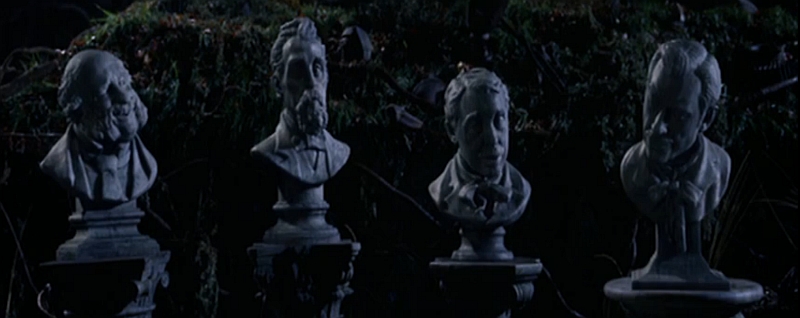Finally, technology put to good use

Halloween is coming soon, and as you can imagine props the you can by at the local Spirit Halloween store become more and more sophisticated every year. I have a few that decorate my house all year long, and as the holiday gets closer we’ll talk a little more about scary technology, both actually scary as well as the stuff used for entertainment.
I made my first pilgrimage to the Halloween store this weekend, and as usual there is a fun selection of animated and battery-powered props – everything from the pretty scary to the, well, not so much.
Although I thoroughly enjoy walking through there, I am mostly intrigued by something they introduced last year; a series of DVDs that can be used in conjunction with a projector and a well-prepared window to project some Haunted Mansion-quality effects for visitors or decoration.
I took a 2-minute video of the display they had in the store (this particular store is in the Best Buy center at the intersection of Marks and Sunset), and surprisingly no one told me to stop. I guess they don’t care of you film or not. Here’s the video, and afterwards I’ll talk a little about data projectors and why you have to be sure to use an appropriate one if you want to try this at home.
It’s just a bunch of computer generated imagery thrown up on a screen from behind by a projector. I wasn’t able to find out the specific projector they were using, however I suspect it is a standard off-the-shelf type you can buy from anywhere. and a white sheet used to project the image onto from behind. Because it’s just video off a DVD, the projector doesn’t need to be data capable, meaning it doesn’t have to match resolutions when paired with a PC, it likely had the DVD player plugged directly in to it.
However, if you are going to use a PC to send data (even video) to a projector, you want to be sure the resolution of the projector is appropriate for what you want to do. There are many standards for resolution, with the numbers representing pixels across the screen and pixels down the screen – for example, there is XGA (1024 x 768), SXGA (1280 x 1024), WXGA (1280 x 768), even good old VGA which is a lowly 640 x 480, and others. There is a confusing yet convenient table at this link.
If you want a big picture, or one that will cover a lot of wall area, you’ll want a higher resolution. When you blow up a small image and make it big, it loses a significant amount of quality and clarity, becoming blurry and jagged. You also need to pay very close attention to what is known as the projector’s native resolution, and that’s true for laptops as well. If you start adjusting the screen beyond the native resolution that is set for the projector, or laptop screen, everything will look blurry and stretched.
We’ll talk more about the use of technology to scare people, and I even once posted a video of an animatronic haunted house display that was so disturbing to some students I don’t post it any more (you can see it here, but be warned: If you are easily scared or offended, or if you have kids watching with you you may want to wait until later), but there is an entire haunted house industry that has conventions and industry publications, and comes up with some incredible displays that incorporate what is often standard, consumer-grade technology. To tide you over, here’s one example, and we’ll have more later on.
